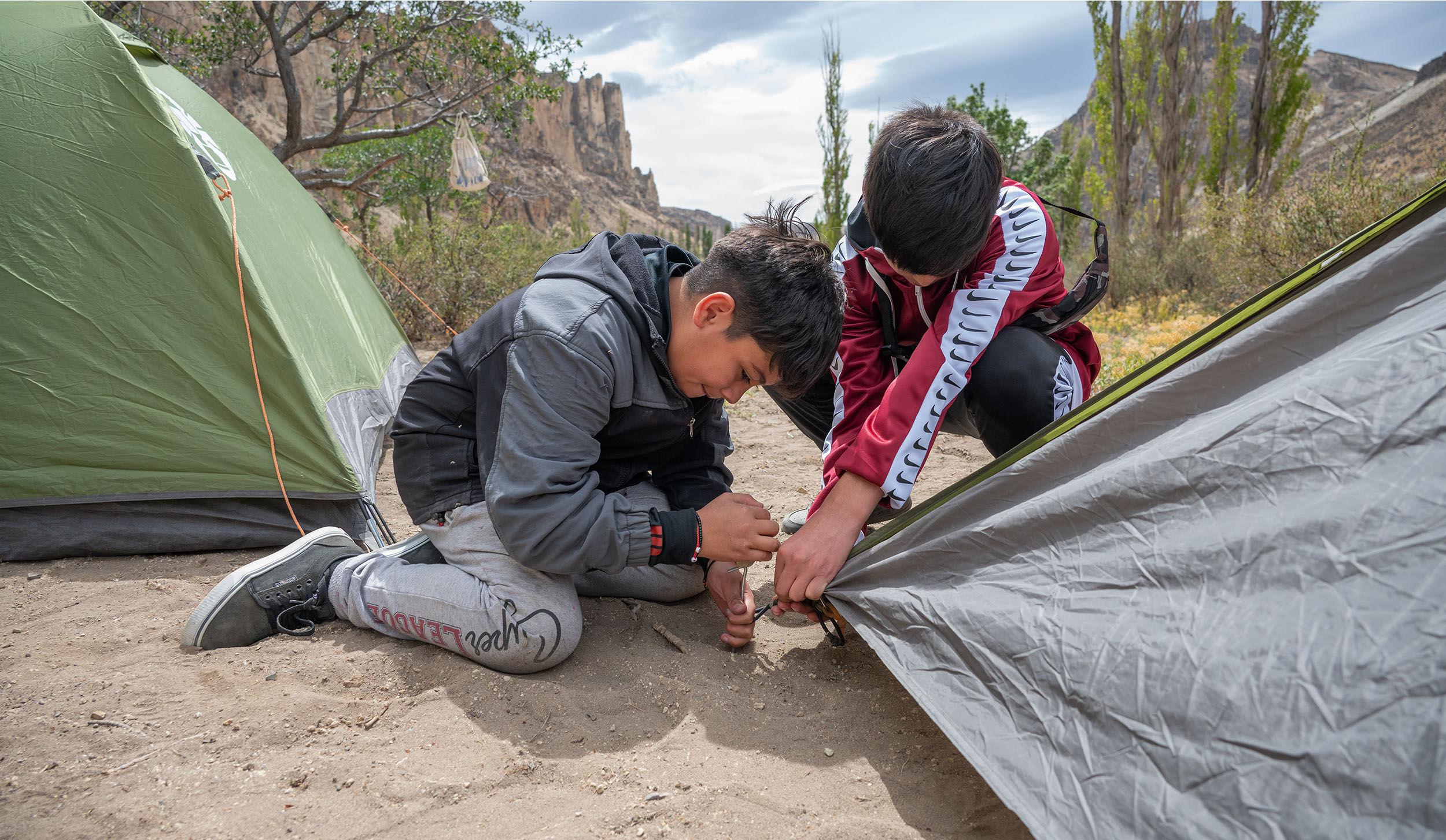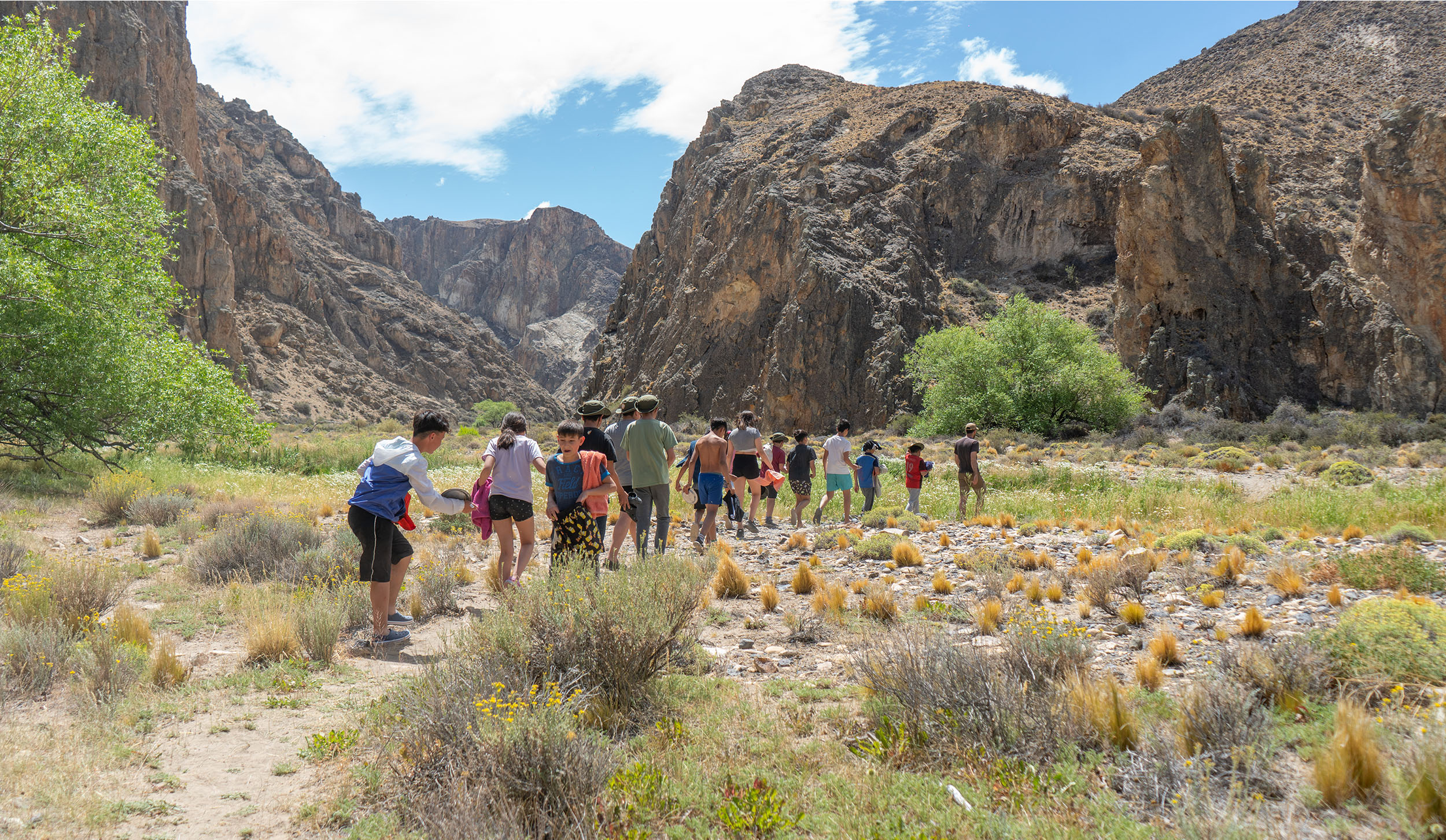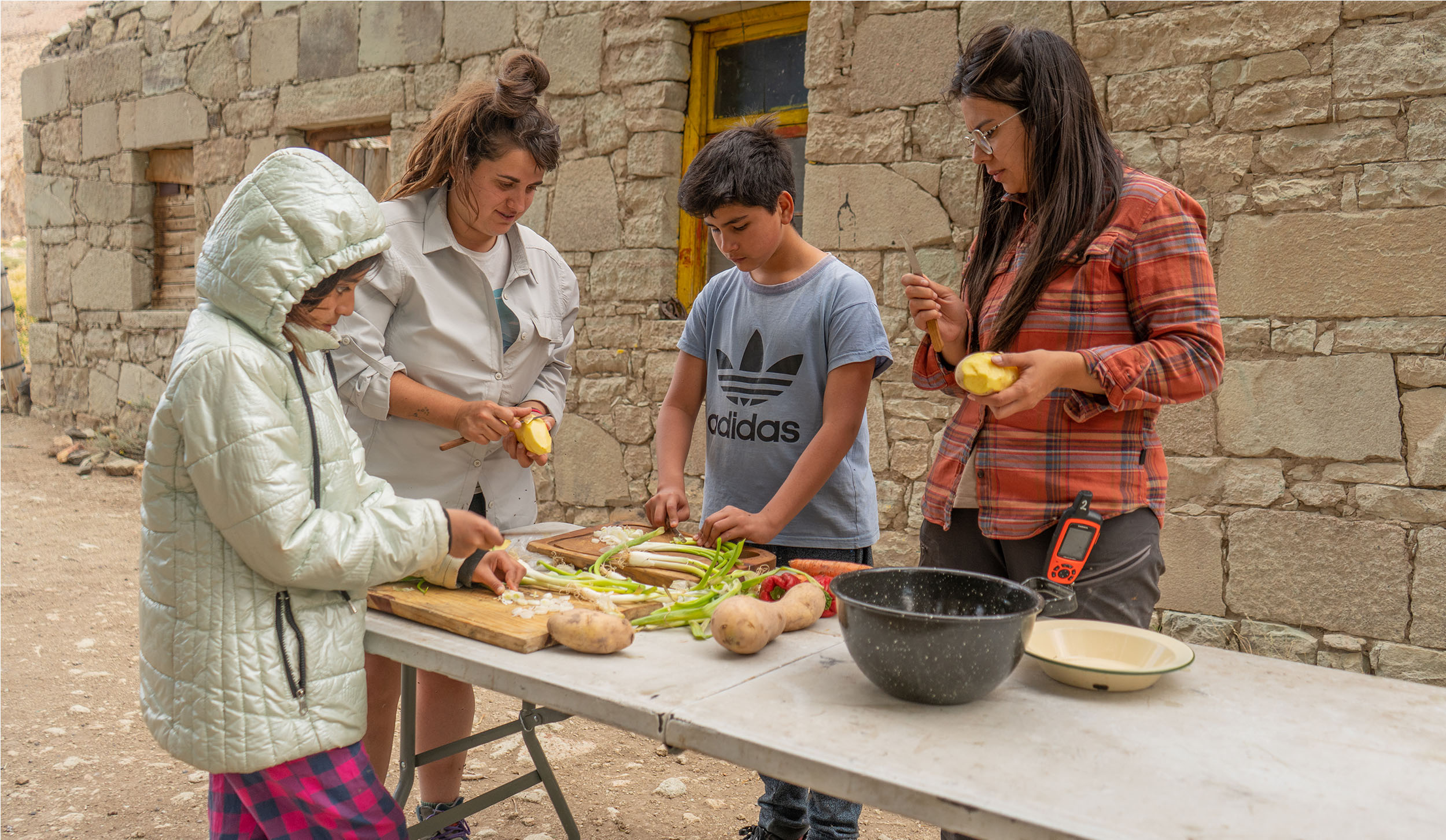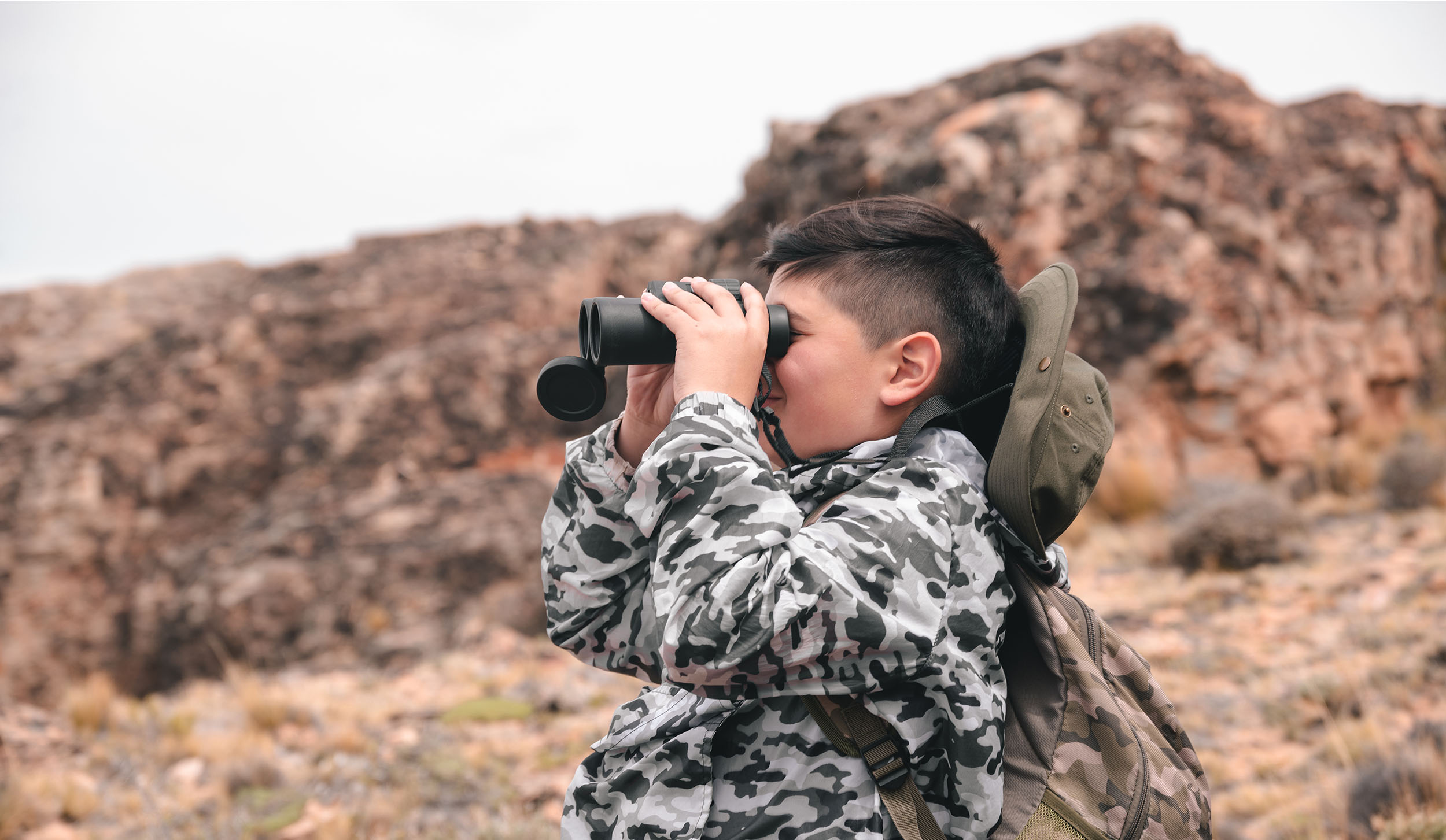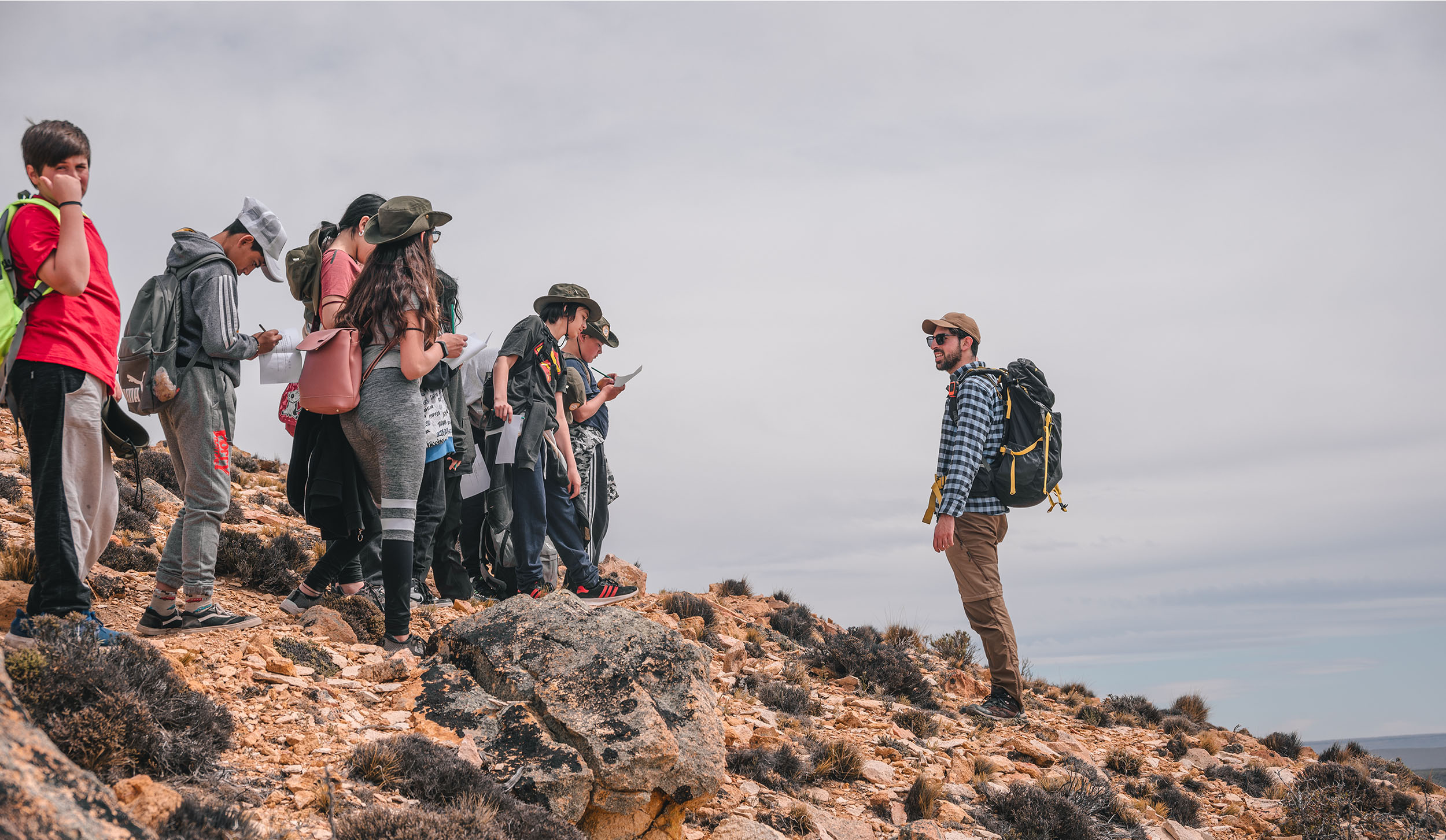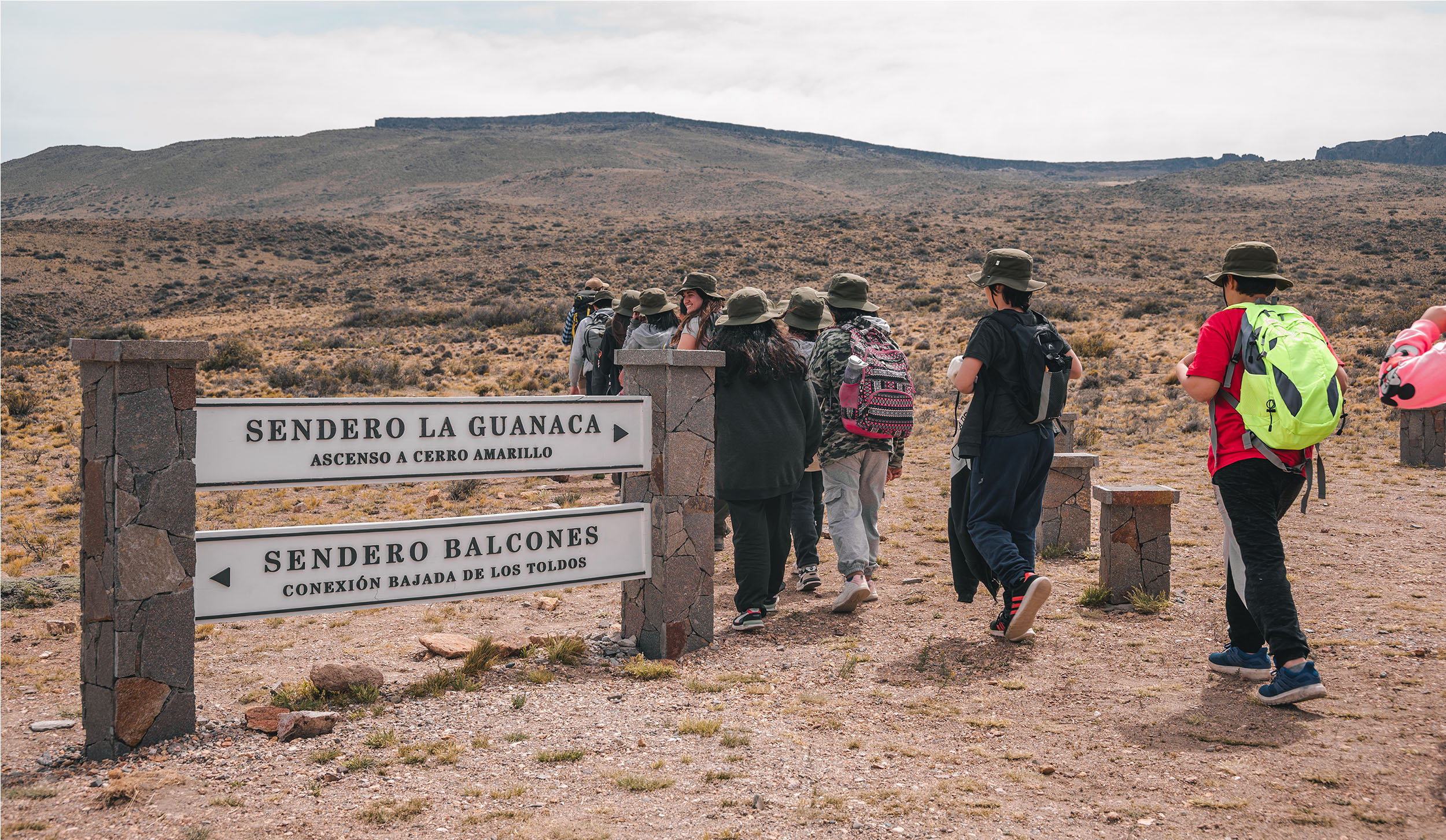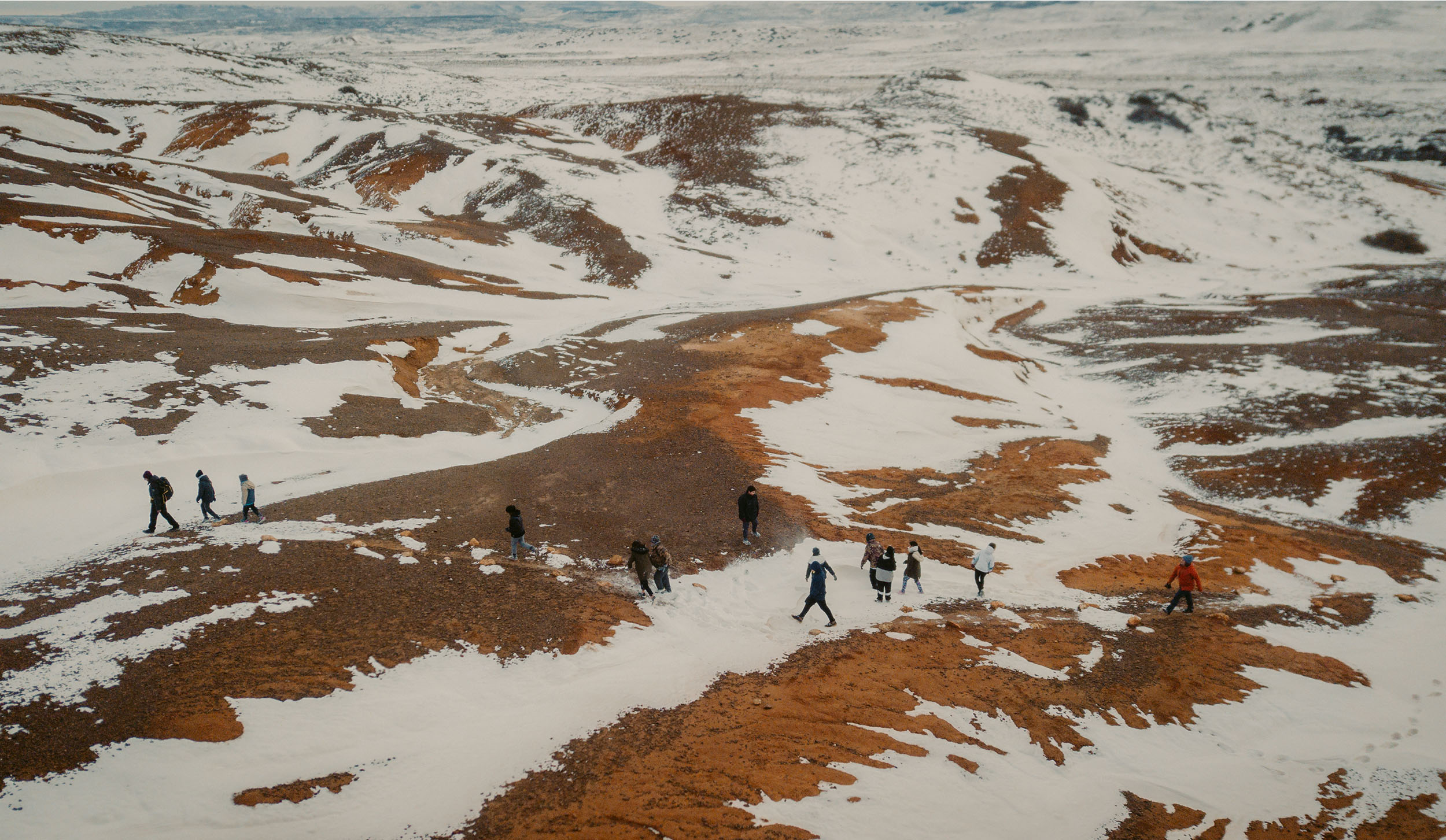La región del Parque Patagonia comprende al Parque Nacional y tres áreas de acceso público con diferentes categorías de conservación, llamadas “portales”, que resguardan mesetas, estepas, cañadones y humedales. En este escenario imponente es posible ver la vida silvestre que lo habita, como choiques, guanacos, cóndores y pumas, entre muchas otras especies.
Desde Rewilding Argentina, con el apoyo de más organizaciones abocadas a la conservación de la naturaleza, trabajamos desde 2011 para ampliar la superficie protegida del Parque Patagonia Argentina y restaurar sus ecosistemas mediante el rewilding. Además, impulsamos las economías basadas en el turismo de naturaleza para el beneficio de la vida silvestre y las comunidades locales.
Del otro lado de la cordillera se encuentra el Parque Nacional Patagonia Chile. Nuestra visión es formar un gran parque y destino binacional de turismo de naturaleza, trascendiendo fronteras humanas en favor de la conservación de los valores naturales y culturales de la Patagonia.
Historia del Parque Patagonia Argentina
2007
Vecinos de la localidad de Los Antiguos reclamaron la protección de la cuenca del lago Buenos Aires para evitar que prosperen proyectos de minería de oro. Para esa época, las organizaciones Aves Argentinas y Ambiente Sur estaban retomando los censos de macá tobiano, un ave endémica de la zona, en las mesetas occidentales santacruceñas y propiciaban la creación de un parque nacional en alguna de esas áreas clave para la especie.
2009
Equipos técnicos de la Administración de Parques Nacionales, con el apoyo de las organizaciones Aves Argentinas, Ambiente Sur y Rewilding Argentina, detectaron tierras fiscales en la meseta Lago Buenos Aires que incluían ambientes de importancia para el endémico macá tobiano.
2012-2014
Rewilding Argentina adquirió y donó el establecimiento El Sauco para proteger uno de los sitios más importantes de nidificación del macá tobiano. El siguiente año, la provincia de Santa Cruz cedió la jurisdicción ambiental sobre esas tierras y sobre veinte mil hectáreas de dominio fiscal al Estado Nacional y así se creó en 2014, por ley, el Parque Nacional Patagonia.
2017
Comenzó un arduo trabajo de restauración y desarrollo de infraestructura en el Portal La Ascensión, que había sido una estancia ganadera. En diciembre, Rewilding Argentina abrió el portal al uso público.
2019
Rewilding Argentina donó las tierras para la creación del Parque Provincial Cueva de las Manos, ubicado dentro del Portal Cañadón Pinturas, que alberga importantes sitios arqueológicos con pinturas rupestres de más de 9 mil años de antigüedad.
2019
Rewilding Argentina donó a la Administración de Parques Nacionales las tierras para la creación de la Reserva Nacional Silvestre La Ascensión, de acceso público y gratuito, con cuarenta kilómetros de sendas que acceden a sitios únicos, como el lago Buenos Aires y la meseta del mismo nombre.
Se inauguró el Portal Cañadón Pinturas, de acceso público y gratuito, con más de cuarenta kilómetros de senderos que permiten descubrir paisajes y vida silvestre, incluyendo un renovado acceso al sitio arqueológico Cueva de las Manos, Patrimonio de la Humanidad.
2020-2022
Gracias al trabajo de Rewilding Argentina en conjunto con Freyja Foundation, el Portal Cañadón Pinturas ya cuenta con más de cincuenta kilómetros de senderos, a la par que continúan los proyectos de rewilding para la recuperación de especies nativas. Comenzó la construcción del Centro de Interpretación y Planetario Elsa Rosenvasser Feher.
2024
En el Portal Cañadón Pinturas se inauguró el Centro de Interpretación y Planetario Elsa Rosenvasser Feher, que cuenta con exhibiciones, proyecciones del cielo patagónico, un café y una tienda. En el mismo portal se continúa extendiendo la red de senderos, que desde este año además brinda acceso al Parque Provincial Cueva de las Manos. A la par, continúan los proyectos de rewilding para la recuperación de especies nativas.
Rewilding Patagonia
Rewilding es una estrategia de conservación que restaura la integridad de los ecosistemas naturales para que vuelvan a ser completos y funcionales, es decir, que contengan poblaciones saludables de todas las especies que lo formaron desde tiempos históricos.
En el Parque Patagonia Argentina, el equipo de Rewilding Argentina, con el apoyo de Freyja Foundation, trabaja en la recuperación de las especies clave del ecosistema mediante el monitoreo y manejo activo de animales, la restauración de ambientes, la erradicación de especies exóticas y la divulgación.
La estepa patagónica de Santa Cruz, hoy protegida en parte por el Parque Patagonia, no fue inmune a los procesos de extinción y reducción poblacional observados en el resto de Argentina. El huemul y el huillín desaparecieron a nivel regional, mientras que el chinchillón anaranjado, el coipo y la gallineta austral sufrieron extinciones locales, lo que disminuyó sus números y alteró la conectividad entre poblaciones. Otras especies como el puma, el guanaco, el choique y el cóndor andino, los mayores exponentes de la fauna terrestre de Patagonia, también han sufrido drásticas reducciones en sus números.
Como resultado, procesos ecológicos clave, como la depredación y las migraciones, han sido alterados con profundos impactos negativos sobre el ecosistema. En la Patagonia árida, nuestras metas incluyen reintroducir las especies autóctonas hoy ausentes y aumentar los números de las especies presentes pero diezmadas, con el objetivo final de restablecer los procesos ecológicos típicos de la estepa.
Las especies que se recuperan en el Parque Patagonia
Puma
Arquitecto del ecosistema
La presencia de este gran felino determina el buen funcionamiento del ecosistema. En el Portal Cañadón Pinturas, trabajamos para poner en valor el rol ecológico de este depredador tope y transformarlo en un aliado para la producción local.
Guanaco
Migrador ancestral
Es el mayor herbívoro de la Patagonia y tuvo una importancia trascendental para los pueblos originarios de la zona. Trabajamos para conservar el espectáculo de las grandes migraciones y su rol ecológico.
Chinchillón Anaranjado
Centinela del cañadón
Localmente conocido como ardilla, habita en las grietas de los cañadones y tiene hábitos nocturnos. Trabajamos para recuperar las poblaciones que han desaparecido debido a la actividad humana, como la caza.
Coipo
Jardinero del humedal
La desaparición de este gran roedor se vincula con la escasez de la vegetación acuática y con la caza para obtener su piel. Trabajamos para recuperar las poblaciones en el río Pinturas y el cañadón Caracoles.
Gato del pajonal
Pequeño gran depredador
Es un cazador versátil que prefiere las aves terrestres, los ratones y cuises. Trabajamos para poner en valor el rol ecológico de unos de los depredadores más eficaces para regular la presencia de roedores.
Gallineta Austral
Pequeña ave entre juncales
Esta inusual ave habita en los humedales de la estepa patagónica y es mayormente desconocida para la gente local. Buscamos restaurar los juncales que han sido degradados para seguir recuperando las poblaciones existentes de esta especie y generar nuevas en donde desaparecieron.
Cóndor andino
Vigía de los Andes
Es el ave voladora más grande del mundo y puede desplazarse cientos de kilómetros en un mismo día, aprovechando las corrientes de aire caliente. Trabajamos para detener el uso ilegal de venenos que provocan mortandades masivas de esta magnífica ave.
Choique
Caminante de la estepa
Puede alcanzar el metro de altura y es el macho quien se encarga de la incubación y cuidado de los pichones. Trabajamos para eliminar las amenazas que han provocado su declinación en el Parque Patagonia y producir mayor información sobre la ecología de la especie.
Huemul
El ciervo estepario
Es el ciervo más austral del planeta y está en grave peligro, mayormente, debido a la caza, las enfermedades transmitidas por el ganado y la pérdida de hábitat. Trabajamos para reintroducirlo en los valles de la estepa, de los cuales ha desaparecido.
Programa de Exploradores
El Programa de Exploradores del Parque Patagonia Argentina, desarrollado por Freyja Foundation e implementado por Fundación Rewilding Argentina, busca incentivar la curiosidad en la juventud local acerca del lugar donde viven y su biodiversidad, aprovechando los senderos que recorren diversos paisajes y la vida silvestre que los habita. Está orientado a chicos y chicas de entre diez y trece años de las localidades de Perito Moreno, Los Antiguos, Bajo Caracoles y Lago Posadas, en Santa Cruz.
Más información
Whatsapp +54 9 2975 92-5266
Mail exploradores.parquepatagonia@gmail.com







